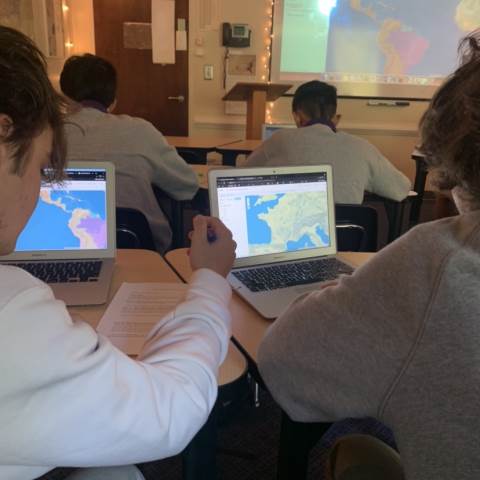

Technology in the classroom is often discussed around the fields of math and science. The humanities often get lost in this conversation of technology integration, but using technology in humanities classrooms, especially a history classroom, is essential to making historical information accessible and engaging, and allowing students to see concepts visually and spatially.
Incorporating new technology leads to deeper engagement with class material and provides space for collaborative activities that equip students with the skills needed in a 21st Century environment. Digital history is the current trend in public history, as historians work to translate historical data into interactive platforms such as websites, maps, timelines and other multi-media spaces.
In both my Human Geography and U.S. History classes, I incorporate a variety of different technology resources that give students different perspectives on topics we are discussing. Interactive maps give geographic and spatial context to events, while interactive timelines allow students to explore chronology in a visual way. We frequently use GIS technology, which allows us to see a variety of data layers that provide complexity to topics.
We also use technology to foster collaboration in class assignments and discussions. Our class uses Jamboard on a weekly basis to engage in conversation and debate. Using this platform allows for immediate feedback and gives students a space to share thoughts in a meaningful way. We also use a variety of technology platforms to complete projects such as infographics, interactive story maps, webpages and podcasts. Projects centered around technology resources give experience for tools they will use in a real-world context, and demonstrate application of material in a practical way.
Showing students that history is more than just reading and writing by incorporating various technology platforms helps to draw strong connection between the past and the present, and empowers them to be leaders in the classroom.